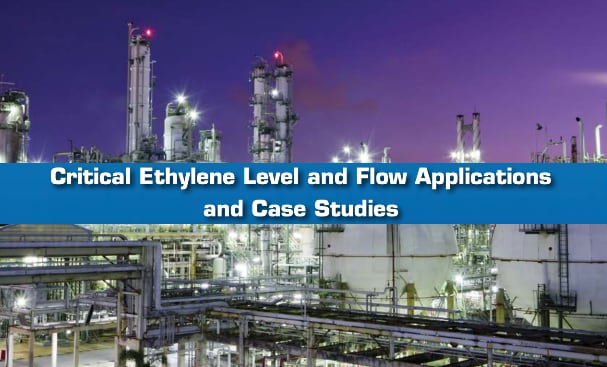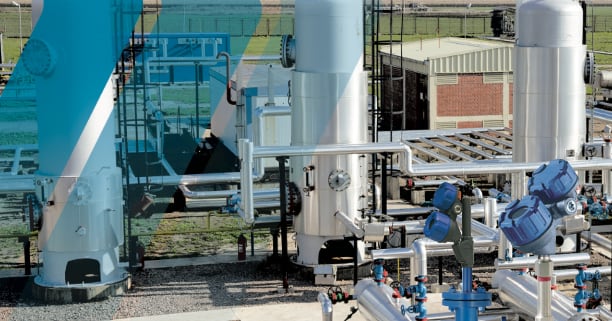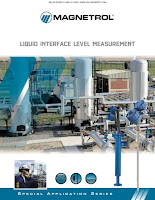A blog specializing in pressure, temperature, level and flow instrumentation, control valves, process analyzers, and all other areas of process measurement. Courtesy of Miller Energy, a New Jersey, New York, Pennsylvania, and Ohio process instrumentation Rep and Distributor.
The Thermo Scientific™ Prima PRO Online Mass Spectrometer & Process Gas Analyzer
The Thermo Scientific™ Prima PRO online mass spectrometer & process gas analyzer meets many challenging process applications in the petrochemical, iron, and steel, and biotechnology industries. The Prima PRO online mass spectrometer delivers faster, more complete, and highly reliable lab-quality online gas composition analysis. It features a rugged, fault-tolerant design that ensures availability that exceeds 99.7%, a simplified maintenance procedure, and an auto-tune capability to facilitate ongoing operation and enhance productivity.
For more information about the Thermo Scientific™ Prima PRO in Metro New York, New Jersey, Pennsylvania, Delaware, and Northern Ohio, contact Miller Energy, Inc. Call them at 800-631-5454 or visit their website at https://millerenergy.com.
Magnetrol Eclipse® Model 706 High Performance Guided Wave Radar Level Transmitter
Understanding the Operation of Mass Flow Controllers (MFCs)
The basic construction of mass flow controllers (MFCs) consists of four main components. A body, a thermal sensor, a printed circuit board, and a magnetic control valve. As gas enters the flow body, a laminar flow element or restrictor diverts a precise portion of the gas to pass through the thermal sensor. The thermal sensor is the heart of the mass flow controller and consists of a bypass tube fitted with a heater element and two temperature sensors. As gas enters the sensor bypass tube, the upstream and downstream temperature sensors measure the temperature differential between gas entering the bypass tube and exiting it.
When choosing an MFC supplier, consider whether the manufacturer provides zero stability specifications, also known as sensor stability, which indicates the device's ability to maintain accuracy over time. Good sensor stability ensures the MFC delivers highly accurate and consistent results with less frequent recalibration or replacements needed. A stable, precise sensor guarantees regular, precise process control. As the thermal sensor measures the change in the flow temperature, it sends a signal to the circuit board, which interprets the data into flow output and compares it to the setpoint received from the user setpoint signal. If the setpoint, or required value, is higher than the measured value or flow output, the controller will open the control valve, letting more flow through. Suppose the setpoint is lower than the flow output. In that case, the control valve will close, decreasing flow, caused when a coil inside the magnetic control valve sends an electrical current around a valve stem, which moves the valve plunger by thousands of an inch. The circuit board is the device's brain, so pay close attention to the electronics and firmware architecture when evaluating an MFC. The MFC should have the ability to support advanced alarms and diagnostics to monitor and correct issues before the overall process is negatively affected. Check to see what built-in alarms and diagnostics are available.
Brooks Instrument devices support flow output and additional alerts like flow totalization, valve drive, flow obstruction, and calibration. All Brooks devices are tested as complete systems to ensure robust and accurate operation and maintain calibration to international standards.
In Pennsylvania and Ohio, contact Miller Energy to learn which Brooks Instrument solution is right for your process.
In Eastern Pennsylvania:
Phone: 610-363-6200
In Western Pennsylvania:
Phone: 412-257-0200
In Ohio:
Phone: 440-735-0100
Critical Ethylene Level and Flow Application Brochure
In ethylene plants, balancing environment, health, and safety is essential while maximizing productivity.
Level and flow instrumentation will assist in preventing loss of primary containment and maintaining a safe environment inside of the tank. That’s critical, because incident consequences are significant, with the direct cost of a work-related death of $1M and indirect costs approximately 4 times greater. In addition, there is the lasting damage to your brand reputation and the compromised safety of the local community. Instrumentation can also assist in maximizing productivity, including interface type measurement in some of the harshest environments.
This brochure contains a wide spectrum of Magnetrol® and Orion Instruments® level and flow products that conform to the latest safety standards, including SIL requirements, to assist in the most critical applications in ethylene plants.
Sliding Gate Control Valves from Schubert & Salzer
Schubert & Salzer's sliding gate control valves are designed as an effective alternative to traditional control valves. The sliding gate valve controls liquid, vapor, and gaseous media precisely, quickly, and economically. The design is uniquely simple, but is intelligently built to handle complex applications that require precise control under taxing conditions. They are an excellent choice for a variety of media, including steam, liquids, and gases.
Sliding Gate Control Valve Operation
A sealing plate with many crossways slots of equal height is fixed in the body at right angles to the flow direction. A moving disc with the same slot arrangement moves in parallel to the fixed disc, thereby changing the flow cross-section. The prevailing differential pressure presses the moving disc against the fixed disc and seals it.
The machined orifices in the fixed plate or disc can vary in design, size, and configuration, determining the flow coefficient (Cv) and the flow characteristic of the valve. As the cross sectional area changes and the valve modulates, flow is broken apart, creating a variable field of area flow, which reduces energy and noise. The differential pressure creates a unique seal between the two plates, and when in the sealed position, an overlap of approximately 1 mm creates a leak-tight valve.
ADVANTAGES OF THE SLIDING GATE CONTROL VALVE
- Fits into tight spaces
- Outstanding rangeability
- 40:1 to 160:1
- Easy to install and maintain
- Variable Cv Values
- Significantly reduced energy consumption
- Minimal wear
- Extremely low leakage rate
- Optimal flow control
- Maximum differential pressures
For more information about Schubert & Salzer products contact Miller Energy, Inc. Call them at 800-631-5454 or visit their website at https://millerenergy.com.
The Vaisala K-PATENTS PR-43A Sanitary Process Refractometers for Food, Beverage & Dairy Industries
Vaisala K-PATENTS® Sanitary Process Refractometers PR-43-AC for hygienic installations in small pipe line sizes of 2.5 inch and smaller; PR-43-AP for hygienic installations in large pipes, tanks, cookers, crystallizers and kettles and for higher temperatures up to 150°C (300 °F); and the PR-43-APT for flush mounting installations in cookers, cooling crystallizers and other vessels that have scrapers or mixers.
Sanitary Refractometer Applications:
Extraction, evaporation, brewing, distilling, sugar dissolving, blending, filling. Alcohol, rum, whiskey, brandy, vodka, molasses, liquors, cider, alcoholic beverages, pre-mixed liquors. Beer and malt beverages, wort, cut beer, root beer. Juices, blended vegetable and fruit juices and nectars, still drinks, vegetable and juice concentrates, iced tea and coffee, instant coffee and tea. Soft drinks, energy and sport drinks, beverage base. Wines, grape must.
Sanitary Refractometer 3A Approval:
The Sanitary refractometer PR-43-A is Sanitary 3-A approved to meet the highest hygiene requirements of food production. The 3-A Symbol assures that the Sanitary Refractometer
PR-43-A conforms to 3-A Sanitary Standard Number 46-04 for Refractometers and Energy-Absorbing Optical Sensors for Milk and Milk Products and it has passed the independent Third Party Verification inspection for 3-A Symbol authorization.
For more information about Vaisala K-PATENTS products in Metro New York, New Jersey, Pennsylvania, Delaware, and Northern Ohio contact Miller Energy, Inc. Call them at 800-631-5454 or visit their web site at https://millerenergy.com.
Crane Duo-Chek® Valves from Miller Energy, Inc.
Crane Duo-Chek® high performance non-slam check valves are available in the sizes, pressure classes and configurations required to meet the most demanding of applications.
The Crane Duo-Chek® wafer valve design is generally stronger, lighter, smaller, more efficient, and less expensive than conventional swing check valves. Its design meets API 594, width is approximately one fourth the face to face dimension and is 15% to 20% the total weight, on most popular sizes, making them less expensive than a swing check valve. It is much easier to install between standard gaskets and line flanges. The savings compound during installation due to ease in handling and only one set of flange studs is required. Therefore, it is more cost-effective to install, and also to maintain.
For more information about Duo-Chek® valves, contact Miller Energy, Inc. Call 800-631-5454 or visit https://millerenergy.com.
Liquid Interface Level Measurement Using Guided Wave Radar, Magnetic Level Gauges, Float & Displacer, Thermal Dispersion, and RF Capacitance
The need for interface measurement arises whenever immiscible liquids - those incapable of mixing - reside within the same vessel. The lighter material rises to the top and the heavier material settles at the bottom. In oil production, for example, water or steam is used to extract oil from a well. Well fluids then route to production separators where they settle into their primary constituent parts as a water-hydrocarbon interface. Water may also be used as a transport medium or a cleaning agent and forms an interface with an allied material which is later extracted.
Knowing the position of a process interface is necessary for maintaining product quality and operations efficiency. The interface is measured and controlled by precision level switches and transmitters. Though at least 20 different types of liquid level measurement devices are in service today, only a very few are suitable for accurate and reliable interface measurement. Grouped by their operating technologies, these include Buoyancy (Floats and Displacers), RF Capacitance, Thermal Dispersion, Radar, and Redundant Technologies (those combining two measurement technologies in one instrument).
The five leading interface measurement technologies in use today are Guided Wave Radar, Magnetic Level Gauges, Float & Displacer, Thermal Dispersion, and RF Capacitance. These five leading interface measurement technologies in use today are discussed in the technical bulletin titled "Liquid Interface Level Measurement" and produced by Magnetrol International.Industrial Valve Automation from Miller Energy, Inc.
Miller Energy's valve automation philosophy is to design, build, and install automated valve packages that improve process efficiency and reliability. We deliver customized actuation products and services that suit your criteria and specifications. Our automated valve packages can be designed to perform basic service, or for specific unique applications where challenging or severe application criteria exist. Miller Energy has relationships with the most highly regarded brands of industrial valves, actuators and controls. Beyond that, Miller's team of valve experts have years of experience and can help you find solutions to fit your specific requirement. From specification, to start-up, through preventive maintenance, Miller Energy is there with you throughout the lifetime of your automated valve.
Miller Energy Valve Automation
- Quarter-turn Ball, Butterfly and Plug Valves
- Linear Gate, Knifegate, and Globe Valves
- Pneumatic Actuators
- Electric Actuators
- Engineered Brackets and Couplings
- Valve Positioners
- Limit Switches
- Solenoid Valves
- Valve Communication Packages
For more information, contact Miller Energy, Inc. Call them at 800-631-5454 of visit their website at https://millerenergy.com.
White Paper: Improving Health and Safety with Magnetic Level Indicators in Ammonia Refrigeration Applications
Using Advanced MFC Alarms to Diagnose and Solve Bioprocessing Issues
The McCrometer FPI Mag Full Profile Insertion Flow Meter
The McCrometer FPI Mag is ideal for capital or maintenance projects, retrofits and sites never before metered. The unique combination of accuracy, ease of installation, and total cost savings make the FPI Mag the perfect choice for a wide range of Municipal and Industrial Applications.
The FPI Mag has no moving parts and a single-piece design. The multi-electrode water flow sensor contains nothing to wear or break and is generally immune to clogging by sand, grit or other debris. The FPI Mag is available with forward-flow only or bi-directional measurement for line sizes from 4 to 138 inches.
The sensor body is made from heavy-duty 316 stainless steel for maximum structural integrity and is hermetically sealed and protected by NSF certified 3M fusion-bonded epoxy coating.
The FPI Mag is rated for Hazardous Locations:
- Class 1, Division 2, Groups A-D, T5
- Class 2, Zone 2, Groups A-D, T5
For more information on the FPI Mag contact Miller Energy, Inc. Call them at 800-631-5454 or visit their site at https://millerenergy.com.
Understanding Safety Integrity Level (SIL)
Nothing is more important than safety to the process control industries. High temperature and pressure, flammable and toxic materials are just some of the issues faced on a daily basis. Reliability is a key component of safety; the more reliable the device, the safer the critical process.
Safety integrity level (SIL) is defined as "relative level of risk-reduction provided by a safety function, or to specify a target level of risk reduction." SIL ratings are applied in accordance of frequency and the severity of the hazard. These ratings determine the level of performance required to achieve and maintain safety, as well as the probability of failure.
There are four SIL levels; SIL 1, SIL 2, SIL 3, and SIL 4. These SIL levels relate to the risk of failure - a higher the SIL rating poses a higher risk of failure, in turn requiring stricter safety requirements.
Magnetrol, a leading manufacturer of innovative level, flow and volume controls for the process industries has put together this excellent technical note to help you better understand Safety Integrity Level.
Miller Energy, Inc.
https://millerenergy.com
800-631-5454
Wastewater Treatment Facilities May Play Important Role in Tracking Coronavirus
New studies show that SARS-CoV-2, the virus causing COVID-19, is shed in human feces and is collecting in our city sewers. If the pandemic continues in waves as the latest estimates believe, wastewater treatment plants could provide early warnings to prevent ICUs and hospitals from being swarmed.
Environmental microbiologists have studied pathogens in sewage for decades. In 1989, Israel set up a Polio virus sewage surveillance system. The use of sewage pathogen monitoring in wastewater treatment facilities as a public health surveillance tool, however, is a fairly new area of study.
Biobot, Somerville, MA company who specializes in wastewater epidemiology, is establishing protocols to test sewage for SARS-CoV-2. If successful, this data will give communities a dynamic map of the virus as it spreads to new places.
Data from sewage will enable communities to:
- Measure the scope of the outbreak independent from patient testing or hospital reporting, and include data on asymptomatic individuals,
- Provide decision support for officials determining the timing and severity of public health interventions to mitigate the overall spread of the disease,
- Better anticipate likely impact on hospital capacity in order to inform hospital readiness and the necessity of public health interventions,
- Track the effectiveness of interventions and measure the wind-down period of the outbreak, and
- Provide an early warning for reemergence of the coronavirus (if it does indeed have a seasonal cycle).
It needs to be mentioned that experts believe, based on previous coronavirus research, that SARS-COVID-2 is effectively removed through traditional water treatment processes. The focus on these public health surveillance efforts track virus levels prior to treatment.
Wastewater treatment facilities interested in participating should visit this site - https://www.biobot.io/covid19.
Other useful links about the effort to use wastewater for SARS-CoV-2 tracking:
https://news.stanford.edu/2020/03/26/understanding-spread-covid-19/
https://news.engin.umich.edu/2020/03/a-sewage-surveillance-effort-to-track-covid-19/
Yokogawa Boiler Controls Used on USNS Mercy
On the United States Navy Hospital Ship Mercy, Yokogawa's Indicating Controllers are used to control two Foster Wheeler boilers supplying steam to 2 GE turbines to generate 18.3 MW of power.
Miller Energy, Inc.
https://millerenergy.com
The Magnetrol Eclipse 700 Guided Wave Radar (GWR) Transmitter
Upcoming Yokogawa "Back to Basics" Process Control Webinar Series
 Now is the time to use your time productively! Yokogawa's "Back to Basics" webinar series provides you a great resource to learn and review different measurement technologies. These online webinars discuss recommended practices, application selection and sizing, and how to avoid common pitfalls. Gain insight directly from the experts!
Now is the time to use your time productively! Yokogawa's "Back to Basics" webinar series provides you a great resource to learn and review different measurement technologies. These online webinars discuss recommended practices, application selection and sizing, and how to avoid common pitfalls. Gain insight directly from the experts!Yokogawa Back to Basics Series:
"Attaining Proficiency in Industrial Pressure Measurement "
- The basic physics of pressure
- Types of pressure sensors
- Communication standards
- Sensor technology considerations
- Calibration and maintenance best practices
"Fundamentals of Fabulous Flow Measurement"
- Review the theory behind flow measurement technologies
- Discuss common flow application challenges
- Evaluate the different technologies when selecting a flow meter
- Illustrate installation practices for successful measurements
"Magical Mystery Tour of High Purity pH Measurement"
- Review the theory behind the measurement of pH
- Discuss the issues surrounding high purity pH measurements
- Illustrate the difference between standard and solution temperature compensation
- Assess installation requirements for successful measurements
- Clarify good calibration and maintenance procedures
"Vibrating Element Technology for Gas Density, Specific Gravity, and Hydrogen"
- The theory behind density and vibrating element technology
- The importance of using compensated density
- How to clean the detector
"Digitally Transform your Plant with Field Wireless and IIOT"
- Where you would use Field Wireless vs IIoT
- The fundamentals of wireless sensor networks
- Applications that illustrate how a wireless strategy can transform your operations, improve reliability, and increase safety
White Paper: Using Digital MFC Capabilities to Improve Bioprocessing Results Miller Energy
 Biomanufacturing relies on numerous pieces of equipment working in concert to produce life-altering therapeutics. The equipment relies on various subsystems to achieve the desired results. In a bioreactor, one of the most essential subsystems provides gas management for the gases necessary for cellular metabolism. At the heart of the gas management subsystem is the thermal mass flow controller (MFC), a component that precisely measures and controls the delivery of gases to the bioprocess.
Biomanufacturing relies on numerous pieces of equipment working in concert to produce life-altering therapeutics. The equipment relies on various subsystems to achieve the desired results. In a bioreactor, one of the most essential subsystems provides gas management for the gases necessary for cellular metabolism. At the heart of the gas management subsystem is the thermal mass flow controller (MFC), a component that precisely measures and controls the delivery of gases to the bioprocess.This white paper, courtesy of Brooks Instrument, discusses mass flow controller data capabilities in relation to a broader biomanufacturing capital asset management.
For more information on Brooks Instrument products, contact Miller Energy. Call them at 800-631-5454 or visit their website at https://millerenergy.com.
Programming the UE One Series Hybrid Transmitter-Switches
The United Electric Controls One Series electronic pressure and temperature transmitter-switches are designed to provide transmitter, switch and gauge functions all-in-one rugged enclosure that can withstand the rigors of harsh and hazardous environments. Available in Type 4X enclosures approved for intrinsic safety, flameproof and non-incendive area classifications, these hybrid transmitter-switches have a fully adjustable set point and deadband and 0.1% repeatability. This video provides a quick tutorial on how to set up the One Series.
For more information, contact Miller Energy. Call them at 800-631-5454 or visit their web site at https://millerenergy.com.












